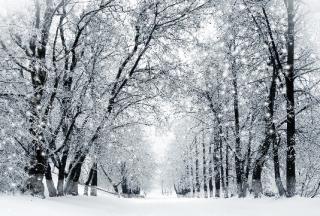Snow Removal

Storm Operations
Salting and Plowing
Snow emergency routes are cleared from the center of the road and pushed to the right side of the road. Secondary streets will be cleared curb to curb after the storm ends. Residents can assist the Public Works Department in the efficiency of snow removal by moving their vehicles to an off street parking area or parking as close to the curb as possible. In the event of large snow accumulations, the Public Works Department will begin utilizing heavy equipment to clear, load, and haul snow from the streets. Streets will be posted as "No Parking" during this type of removal.
Reminder to property owners and residents: it is illegal to plow, shovel or blow snow onto any public street. This creates dangerous driving conditions, as well as, frustrates both the snowplow operator and residents alike.
Snow Emergency Information
Whenever the Mayor finds, on the basis of falling snow, sleet, freezing rain, or as a result of a forecast by the U.S. Weather Bureau, that weather conditions will make it necessary to expedite motor vehicle traffic, and to prohibit or restrict parking for snow plowing and other purposes, he shall put into effect a parking prohibition.
Fire Hydrants
Clearing Sidewalk & Handicap Ramps
Child Safety
- Never build tunnels or snow banks near the street.
- Keep sleds and toys out of the street and away from the edge of the road. Snow banks make it difficult to see children.
- Stay away from the plow - children should stay back at least 20 feet or more from the road.
Motorist Safety
Clearing Your Driveway
Basketball Hoop Stands
During the winter months please move basketball hoop stands back from the roadway. Snow plows are taller vehicles and may hit basketball stands that extend over the roadway.
Winter Stormwater Tips
- Shovel early, the sooner you shovel the less likely snow and ice will build up and you will not need to use as much salt. Apply salt sparingly and remove the slush once the snow melts to prevent from refreezing. Salt in our stormwater system can be harmful to aquatic life.
- Refrain from using kitty litter or sand as these could clog drains and contribute to runoff pollution.
- Always shovel storm drains from the sidewalk. Shovel snow into vegetated areas, where meltwater can soak into the ground. This reduces runoff that flows down storm drains and directly into rivers and streams.
- Mark your drains in late fall prior to snow fall to help you to see where to shovel during each snowfall. Always keep your drains clear of snow and ice to prevent flooding.
- Winterize your vehicles to prevent leaks. Cars should be washed at a commercial carwash, where soapy water doesn’t enter the storm sewer system.
- Practice good housekeeping by storing salt and other de-icers under a roof or other cover to minimize polluted runoff.

